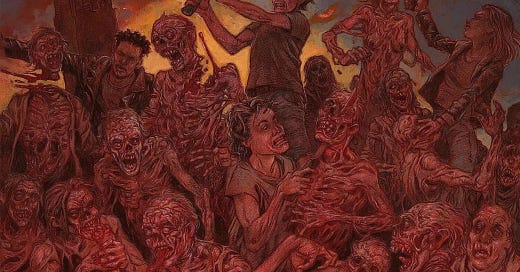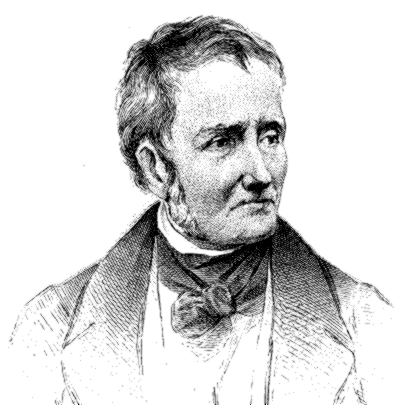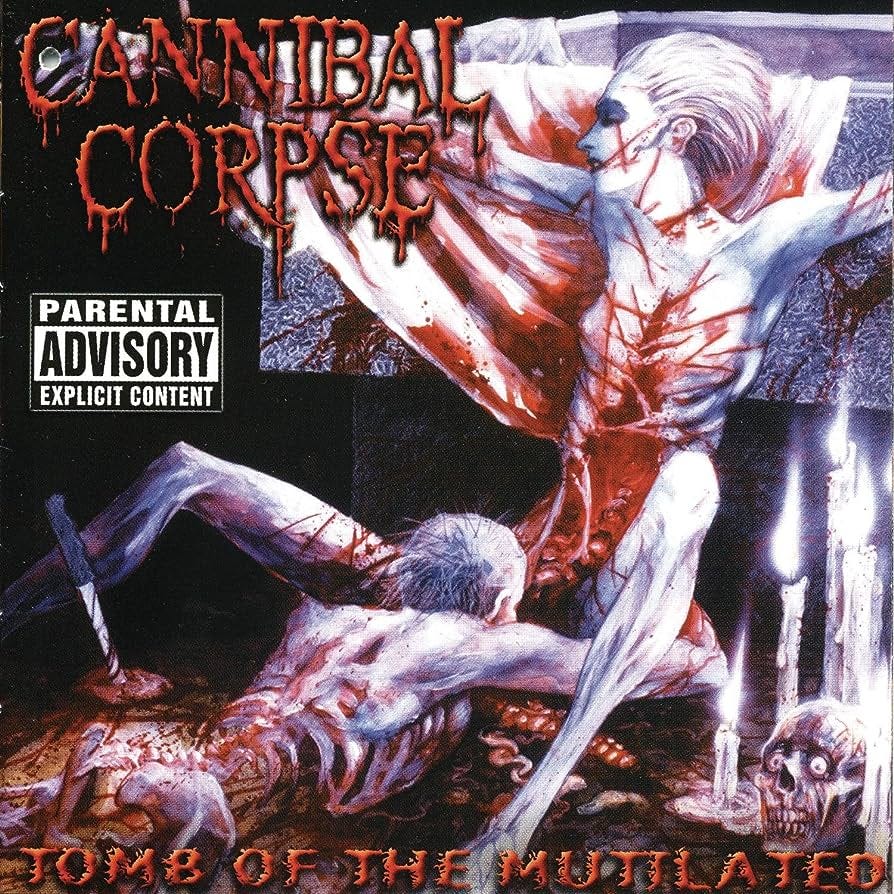Grotesque Harmony: Brutal Riffs Meet Romantic Whiffs
Thomas De Quincey's Dark Romanticism in Cannibal Corpse’s Anthems.
In anticipation for Cannibal Corpse’s next album (pictured above), I have been listening to their back catalogue.
I must say, Cannibal Corpse have grown on me in recent years. On my first listen, I was perplexed to why these were beloved, defaulting to their controversy being the driver of their (in)famous stature in music.
Cannibal Corpse emerges as a contemporary beacon of audial terror; known for their guttural vocals, aggressive instrumentals, and disgracefully, controversial lyrics; it does not take much to grasp the graphic imagery in their music with titles such as Hammer Smashed Face, Frantic Disembowelment, Icepick Lobotomy, or Meat Hook Sodomy
However, I concede, they are the Kings of Death Metal ( with 200 Stab Wounds probably coming for their crown in a few years if they continue their trajectory!).
Now, it is a passion of mine to find the legacies of the Anglo-Romantic literary tradition within the present-day. It's almost a dance macabre to see themes from the works of Thomas De Quincey in the gritty, gruesome verses of Cannibal Corpse.
De Quincey’s Dark Romanticism
Thomas De Quincey, an emblematic Anglo-Romantic writer explored the darkest facets of the human experience, all the while employing an eloquence that beckoned readers into an entangled forest of beauty and decay.
His seminal essay, On Murder Considered as one of the Fine Arts (1827), stands as an edifice of dark Romanticism. Dark Romanticism emerged, essentially, as a reaction to the transcendentalist movement, focusing more on the darker aspects of humanity and the human psyche.
As such Dark Romanticism is underscored by its morbid curiosity. De Quincey presents murder as an art form, which challenges conventional expectations and norms even for today! On Murder offers not only the psychological insights into the motivations of murderers, but the psychology of those drawn to such gruesome stories. It also provides commentary on the cultural fascination with true crime and remains a thought-provoking piece of literature that continues to be studied for its exploration of the complex relationship between violence, aesthetics, and human psychology.
Thomas De Quincey explored the darkest facets of the human experience, enthralled with death, decay, and despair. This macabre fascination can be likened to Cannibal Corpse's lyrical narrative in Stripped, Raped and Strangled, a song that boldly treads where most fear to venture, depicting raw, inhumane violence.
Human’s are morbidly fascinated, which is why tracks titled I Cum Blood piques the interest of many who are unaware of Cannibal Corpse, and is one of Cannibal Corpse’s signature songs amongst fans. With this, it is apparent that Cannibal Corpse and De Quincey share a penchant for exploring the grotesque in detail, albeit through different mediums.
The Death-Metal leviathan, through grotesque narrative, engenders a peculiar synergy with De Quincey's Dark Romanticism, crafting a parallel universe where beauty and horror collide in a cacophonic symphony of human complexities.
Cannibal Corpse's discography mirrors the intricate narrative landscapes that De Quincey navigated, forging a continuation of Dark Romanticism.
Violence Unimagined
In the somber corners of human creativity, a fascinating dialogue unfolds between the lyrical brutality of Cannibal Corpse and the intricate, yet dark narrative woven by Thomas De Quincey in the 19th century. It's an intricate tapestry that explores the nuances of violence and the morbid fascination that envelopes it.
Cannibal Corpse, renowned for its explicit content, mirrors the courageous endeavor of De Quincey to peel back the layers of societal norms and delve deep into the abyss of human darkness. The brutality captured in their lyrics, marked with visceral imageries, resonates with De Quincey's exploration of the darkest facets of human nature, albeit through a different medium.
Songs like Evisceration Plague borders on the grotesque, offering a raw, unapologetic glimpse into the heart of darkness that does not shy away. This echoes eerily with On Murder where individuals drawn to the aesthetics of violence challenge the conventional boundaries that separate art from the macabre.
It is in this potent melding of music and literature where we find a wondrous synergy - a willingness to probe the sinister corners of the human mind without reservation. The irony woven into Evisceration Plague is akin to De Quincey’s ironic undertones, creating a harmonic resonance between two entities willing to engage in a dialogue that challenges conventional norms and aesthetics.
Similarly, the song Necropedophile equally transgresses boundaries to offer listeners a glimpse into the most perverse and dark corners of human imagination. This, again, echoes De Quincey's sentiments - an exploration of the darkness that lurks within the human psyche. It paints a picture so grotesque yet fascinating, forcing audiences to confront the uncomfortable reality that the boundary between fascination and revulsion is perilously thin.
Compelling, grotesque harmonies. Romantic nuances within Cannibal Corpse, contrasted with the literary legacy of Thomas De Quincey, presents the poignant nature of artistic expressions across generations. It encourages myself to widen my interpretative lenses, tracing more legacies of the Anglo-Romantics within contemporary works in bitesize pieces.






